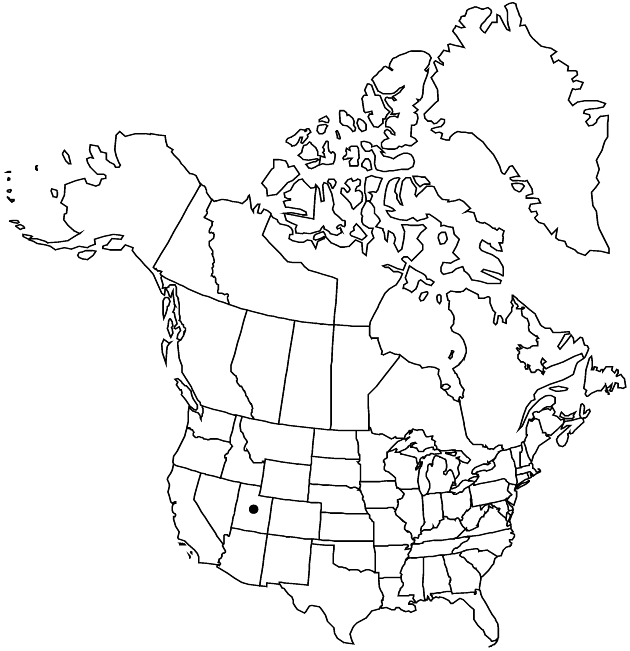Perityle specuicola
Great Basin Naturalist 43: 373. 1983.
Perennials or subshrubs, 30–75 cm (sprawling or pendulous, much branched, sparsely leafy); hispidulous. Leaves (mostly alternate): petioles 1–3(–8) mm; blades ovate to elliptic, 2–8 × 1–5 mm, margins entire. Heads borne singly or in corymbiform arrays, 3.5–5 × 5–6 mm. Peduncles 4–70 mm. Involucres campanulate. Phyllaries 11–16, lanceolate to oblanceolate, 3.5–5 × 0.5–1 mm. Ray florets 0. Disc florets 30–60; corollas yellow, tubes 0.5–0.8 mm, throats broadly tubular, 1.3–1.8 mm, lobes 0.4–0.6 mm. Cypselae narrowly oblanceolate, 3–3.8 mm, faces glabrous, margins thin-calloused, relatively long-ciliate; pappi usually of 1–3(–4) unequal bristles 1–2.5 mm, rarely 0.
Phenology: Flowering spring–fall.
Habitat: Rock crevices and faces along rivers and seeps
Elevation: 1100–2300 m
Distribution

Utah.
Discussion
Of conservation concern.
Perityle specuicola, which resembles P. megalocephala and P. stansburii in having relatively small, sparse leaves, is found only in “hanging gardens” along streams and near seeps in Grand and San Juan counties. The stems of this rayless species are usually sprawling and long-pendent, the cypsela margins are thin and long-ciliate, and the pappi are of 1–4 bristles.
Selected References
None.